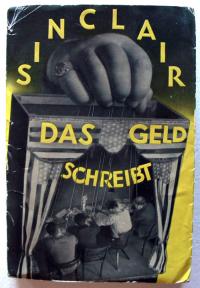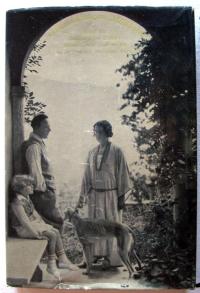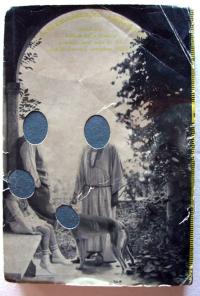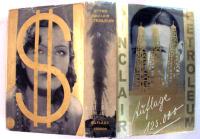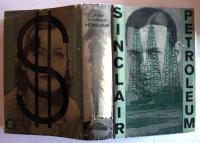The German artist-activist John Heartfield (born Helmut Herzfelde, 1891-1968), created images in photomontage using labels, newspaper ads, photographs, and engravings. These were cut, assembled, and re-photographed (by Janos Reisman) for half-tone reproduction. Heartfield himself was not a photographer but a collage artist who prepared the work for commercial reproduction. George Grosz said he and Heartfield invented photomontage “in my South End studio at five o’clock on a May morning in 1916.” (George Grosz, “Randzeichnungen zum Thema,” Blätter der Piscatorbühne, Berlin 1928). Unlike other reproductive work, the published half-tones are usually bought and sold as Heartfield originals.
Heartfield joined the German Communist Party in 1918 and remained sympathetic to these ideals throughout his life. His younger brother, Wieland Herzfelde, founded the publishing house of Malik Verlag where leftist writers were championed, such as American Upton Sinclair who sought to expose social injustice and economic exploitation through his writing. Heartfield created many of the dust jackets for his brother’s publications.
Heartfield’s cover designs involved two images, one for the front cover and one the back, interrupted by a separate spine element. The two images for Sinclair’s Das Geld schreibt depict a group of writers as puppets of the state on the front and the family of German writer Emil Ludwig (1881-1948) on the back. Ludwig, who was himself persecuted by the National Socialist Party, threatened to sue Malik for defamation of character. As a result, the faces of the Ludwig family, including the dog, were punched out on all unsold copies. Princeton now owns both the censored and the original uncensored copies.
Heartfield was eventually forced to leave Germany in the 1930s but thanks in part to Berthold Brecht, was able to return in 1950 when he worked primarily in theater design.
Below, see two of the color variations Heartfield created for Oil! (Petroleum), Sinclair’s novel recently translated to film as There will be Blood, by Paul Thomas Anderson, starring Daniel Day Lewis. Heartfield tried the design both in green and in gold, representing both paper money and hard currency.
For more, try this volume on bindings and dust jackets of Berlin Publishing Houses: Blickfang: Bucheinbände und Schutzumschläge Berliner Verlage 1919-1933 by Jürgen Holstein (2005).
Magdalena Dabrowski, “Photomonteur: John Heartfield,” MoMA magazine no.13 (Winter/Sprint 1993): 12-15.
Peter Selz, “John Heartfield’s ‘Photomontages’,” The Massachusetts Review 4, no. 2 (Winter 1963): 309-36.
